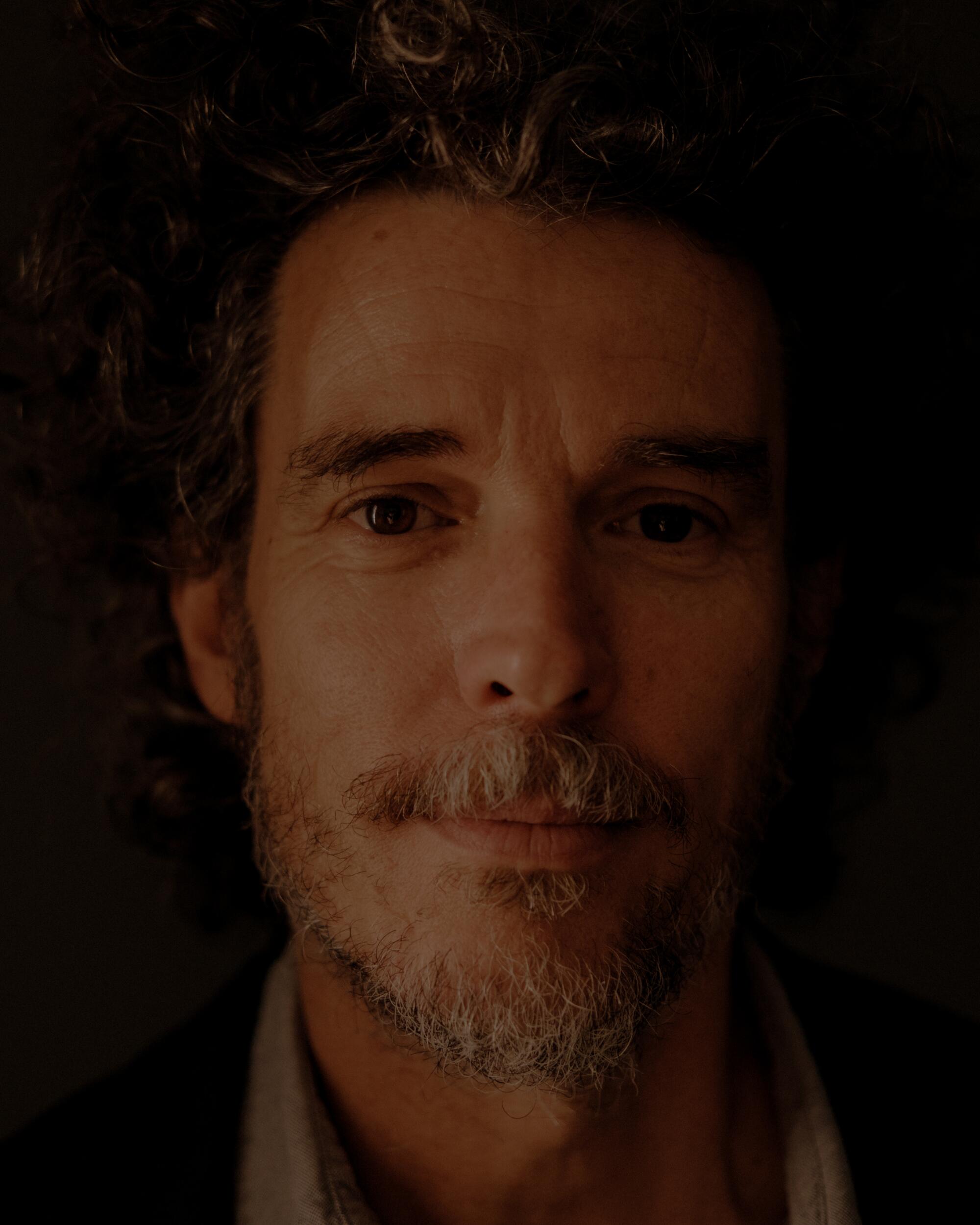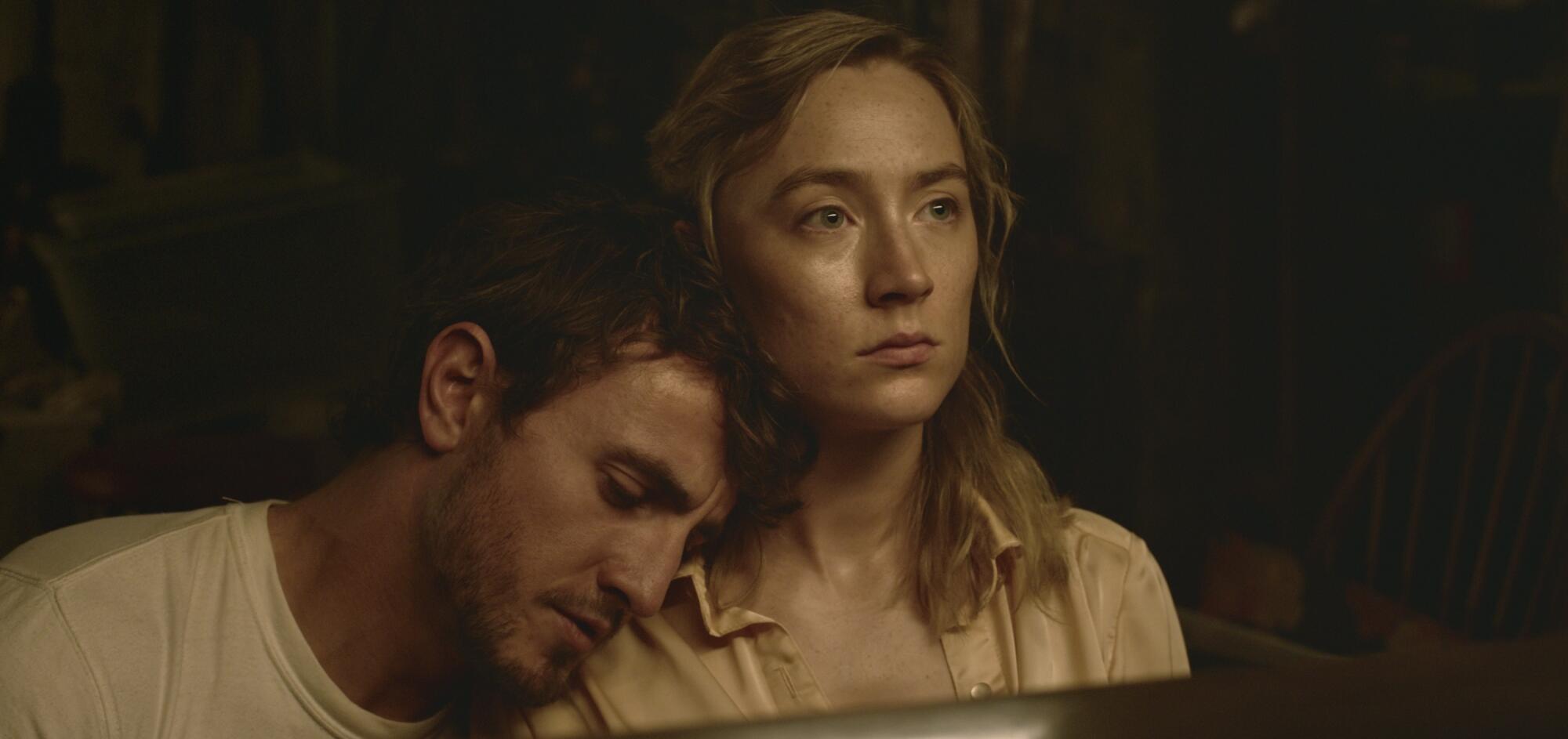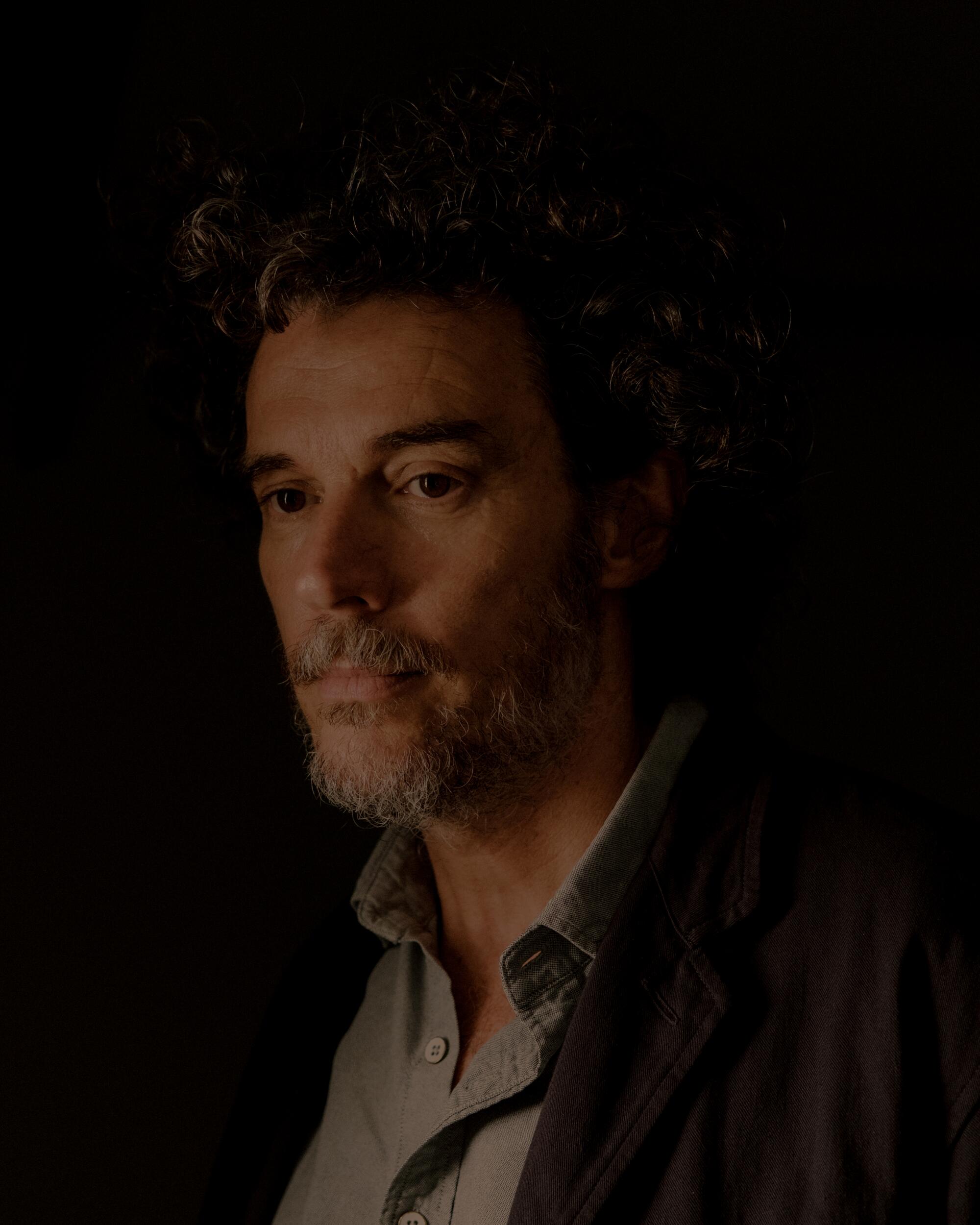- Share via

LONDON — After making 2016’s Oscar-nominated “Lion,” Garth Davis spent some time looking for something that could challenge him. The Australian filmmaker doesn’t tend to work in a particular genre but instead looks for stories that generate a feeling of connection. A few years ago, someone handed Davis a copy of Iain Reid’s 2018 novel “Foe,” about a couple living in an isolated farmhouse in a dystopian future.
“I’ve just got to feel it,” Davis says. “There is a through line, I think, in that my work looks at love. I’ll always come back to that and back to the human condition. But with this one I was looking for something that challenged me more and had a few more moving parts, but still spoke about a relationship.”
For Davis, the entry point was Henrietta (Saoirse Ronan), a discontented wife whose husband Junior (Paul Mescal) is being replaced with an AI replica while he’s sent to space. Davis felt that what Henrietta fights for in the story reflects what he fights for in his own life and work.
“She really does appreciate the preciousness of our lives and how little time we have left and she wants to feel alive and live life,” Davis says. “And I feel like I’m trapped in a world that’s asleep. I really loved how it looked at a very normal relationship that stagnated over time, and how we could take each other for granted and how we lose our identity and lose our true purpose in relationships. I found all that very fascinating. These other elements, like the AI, enabled us to approach and explore that relationship in a really amazing way.”

After discovering the novel, Davis met with Reid and producer Kerry Kohansky-Roberts in Los Angeles. They made a list of screenwriters who might be right for the adaptation, but as Davis and Reid starting talking about the film it became apparent they could do it themselves. “He and I met and were just going over the book and not thinking at that point that we’d write it,” Reid says of Davis. “But we realized that we had similar ideas about how the book could transform and it was exciting to us to make that discovery. We went for it and said, ‘Can we have a shot at adapting this?’ Garth came up to Canada and we spent time traveling around rural Ontario, where I wrote the book, to meet farmers and see the landscape,” Reid says.
“It was as COVID hit,” Davis adds. “I was literally flying out as America was all closing down. So then we fleshed out the acts and the structure remotely. We sent passes [of the script] back and forth for about a year.”

The plot of the film is relatively similar to that of the book, but Davis and Reid wanted to incorporate more of Henrietta’s perspective into the movie. Both writers were also less interested in the science fiction elements of the setting than they were in exploring the couple’s tension-filled relationship. The dying landscape around them, caused by severe droughts, mirrors the demise of their marriage.
“I think the sci-fi elements, the AI stuff that’s in the book, was used as more of a metaphor,” Reid says. “It’s not really a science-fiction thing at all. It’s not really about AI. The feeling was, ‘We can do that in this movie too.’ We can misdirect in a way that what you’re seeing is science fiction or about AI, but that’s not really what it is at all.”
Davis, who says he has an “allergy to using visual effects,” wanted to play into the grounded nature of the story by shooting in Australia. The team used the Winton Wetlands, which Davis discovered during a family camping trip, as the primary location and completely rebuilt a farmhouse Davis and Reid had found in Canada. Interiors were constructed on a soundstage in Melbourne. All of the landscapes, which include a striking pink lake, became essential to the storytelling.
“If anyone works with me, they know we’re going to be somewhere very remote,” Davis says. “Sometimes you invest in helicopters, just bouncing around so you can get to things very quickly. When we’re filming [in these places], you feel, ‘No one’s ever shot this before.’ There’s all these amazing places in the world and to bring that to an audience is very exciting.”

The film’s ending arrives with a surprising twist (and yes, Reid wrote the novel long before a conceptually similar episode of “Black Mirror” arrived earlier this year). It was important to both Reid and Davis not to over-explain the narrative. There are moments toward the end that are disorienting before it all comes together, but “Foe” asks the viewer to take on some of the effort, which is ultimately more satisfying.
“The whole point is that modern culture is about spoon feeding,” Davis says. “It’s just about satisfaction and enjoyment and spoon feeding. We wanted to wake people up and make them work in a way that connected to the themes of the story. We’re asking them to participate, to think about things, to engage. Because we’re sleepwalking, currently.
“It’s a movie that is putting a mirror up to our behavior, which can be confronting, and it’s also celebrating love and kindness, which people don’t click on. They click on everything else — murder and violence and all that stuff — but they don’t click on love and kindness. But for real people, for real audiences, that’s meaningful.”
More to Read
From the Oscars to the Emmys.
Get the Envelope newsletter for exclusive awards season coverage, behind-the-scenes stories from the Envelope podcast and columnist Glenn Whipp’s must-read analysis.
You may occasionally receive promotional content from the Los Angeles Times.










